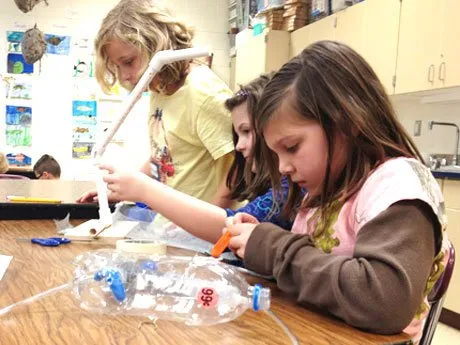Visual Arts
1//9-1/13

Workshop Activities:
1. Craft - Paintings
2. Key Points – Visual Arts
3. Collaborative – Photo Shoot
4. Writing – Qualities of Art
5. Math/Logic – Timeline Tapestry
6. Character Connection – Beautiful People
7. Big Activity – Modern Art
8. Movement – Art Relay Race
Disney class - The Arts (Performance and visual arts
The expression or application of human creative skill and imagination
Expressions (and continuation) of culture
-used before battle (Hakka)
-used in celebration
-memorials of epic battles
-used to gain power from the heavens
-worship of the Divine
-used to attract a romantic interest
-sacred time: as a way of celebration
-Used to relay important information (especially across generations (i.e. transmission)
Music (sound)
Acting (Kinesthetic, Visual)
Art (Visual)
Writing (brings them together)
Presentation: https://prezi.com/z108ytzfdtjh/the-arts/
The Branches of Art
VISUAL ARTS:
Drawing
Photography
Painting
Conceptual Ar
LITERARY ARTS:
acquaintance with letters.
written works.
Myth
Prose
Poetry
Epic
Legend
PERFORMING ARTS
Dance
Music
Theatre
Musical Theater
Quests:
Have the students carve (and maybe cast) a statue.
Make some artistic patterns: http://www.kinderart.com/drawing/patternsgalore.shtml
Trace a map of your neighborhood. Use this as a design for a painting.
Think about how even bad guys are usually not all bad. We can find good in others. Practice this skill by writing five nice things about each member of your family.
Do some more modern art:
http://www.thecraftyclassroom.com/ThemeFamousArtists.html
http://artsycraftsymom.com/art-appreciation-10-claude-monet-art-projects-for-kids/
http://teachertomsblog.blogspot.com/2012/04/real-story-of-art.html
http://www.artyfactory.com/portraits/pop-art-portraits/pop-art-portrait-examples/mr-spock.html
Do some silkscreening: http://elementaryartfun.blogspot.com/2014/10/silk-screen-printing-made-easy.html
Make some illustrations for the Harry Potter books.
Color a coloring book page in Pointillism style.
Discuss with family or friends, “What is art?” Write their responses in your wizard journal.
Notice art in every-day life. How much art is there in the things you see and use every day? Put sketches and commentary about these artworks in your wizard journal.
Visit the The Salvador Dali Gallery: http://www.daligallery.com/
Make a timeline of photography. Here is a great reference: http://smithsonianeducation.org/images/educators/lesson_plan/every_picture/every_picture.pdf
Write a poem that tells the story of the history of art.
A metaphor is something that represents something else, like a lion can represent a king, or a fire can represent destruction. Make your own art piece that is a metaphor for your life.
What is your favorite style of art? Why? Practice some of that art style.
Make up your own story, poem, song, or dance about a painting that you observe.
Draw a comic strip about some people looking at an odd piece of art.
Have a discussion with an art curator. What criteria are used to decide what art to collect? What criteria would you use?
Pretend you had a conversation with the subject of a painting. What painting would you have a conversation with? Why? What would you discuss? Write your conversation in your Wizard Journal.
Write a critique of a piece of art of your choice.
Observe a piece of art. Answer as many of the following questions as you like. Write your answers in your Wizard Journal.
What message is the artist trying to portray?
What type of painting is it?
What medium is used?
What technique is used?
Are there symbols in the painting?
When was it painted?
What events surrounded the work of art?
How does the painting make you feel?
Does the painting remind you of something else?
Do you like the painting? Explain.
Play some math games.
Take a photograph of something and write a story about it. It could be of children at the park. Name the children and create a story behind them.
Read fiction and non-fiction about art and artists.
Create a photography scavenger hunt with 10 to 20 items to find and take pictures of. Have friends or family do the hunt with you.
Photograph an ABC book. Photograph something that starts with each letter of the alphabet, then assemble it into a book.
Descriptive words are called adjectives. Do some adjective activities: http://busyteacher.org/17367-practicing-adjectives-10-fun-activities.html
Examine some photography by Edward Curtis. Make a photo journal of his work.
Write a chapter of a wizard's survival book: http://home.cogeco.ca/~rayser3/potter.txt
Choose a place where a specific instrument was made. Explain about the instrument while the music of that specific instrument is playing.
Start a blog. Post your photographs and artwork. add captions, and record what you are learning.
Photograph objects that start with the letters in your name or look for things that look like letters to make your name.
Gather your photos and stories and compile them in a digital photo album.
Try out the photography techniques found here: http://clickitupanotch.com/2012/07/photography-for-kids/
Make a computer generated “Rainbow Whirlygig” at this Website: http://www.zefrank.com/byokal/kal2.html
Make up your own story to go with the Unicorn Tapestries: https://en.wikipedia.org/wiki/The_Hunt_of_the_Unicorn
Like the woven tapestries, do some weaving of your own.
Identify different painting eras, styles and techniques. Write about them in your Wizard Journal.
Make a flip book to make pictures move.
Start an omni journal: https://youtu.be/YUAIe00yDHk




















